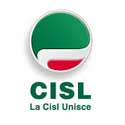Therefore, by assigning different data types to variables, you can store integers, decimals or characters in these variables. Trouvé à l'intérieur – Page 91In Python, a variable can be associated to objects of different types during the execution of the program. ... Cython extends the Python language with explicit type declarations so that it can generate efficient C extensions through ... Python allows you to use a lowercase l with long, but it is recommended that you use only an uppercase L to avoid confusion with the number 1. First, they help people reading your code to know what types of data to expect. Use the type() function to get the class name of an object. For example −, Here, an integer object is created with the value 1, and all three variables are assigned to the same memory location. So, whats the shortest way to do this? How can I determine if a variable is 'undefined' or 'null'? Now let us see below in detail about these variables with examples. And its value can change throughout the program. What is python variable, and how is Python variable declaration . python type declaration of variables Code Example ... Python variable It doesn’t know about the type of the variable until the code is run. Therefore, unlike mathematics, Python associates the value or the expression on the right with the variable given on the left. That definitely doesn't mean that writing code in C is simple. Asking for help, clarification, or responding to other answers. You must also explore and experiment with the shell. This will create two variables: a = 4 A = "Sally" #A will not overwrite a #A and a are different. python python-3.x python-2.7 variable-declaration. >>>> myInt = 11. The most effective method to get data-type of python? however, things are different with python. They are defined as int, float and complex classes in Python.. We can use the type() function to know which class a variable or a value belongs to. So, after assigning a value to a variable you can easily detect its type with the help of function ‘type’. Ils sont capables de stocker des valeurs de types de données. Or is it more the way Terry Pratchett sees it in "The Truth": There are, it has been said, two types of people in the world. Trouvé à l'intérieur – Page 3-95Before diving into Python, it pays to review basic syntax and construction. A few critical areasare discussed inthis section. Variable Declaration Python is savvy with variable types and does not need an indication that a variableisan ... We have options to change Variable types even after they have been set and don’t ... x = "John" # string declaration by double quotes x = 'John' # string declaration by single quotes . And makes the contents of the container accessible through that variable name. If you want enrich your career and become a professional in python, then visit Mindmajix - a global online training platform : python certification course This course will help you to achieve excellence in this domain. Python type hints are only used ahead of … Exemple: a = 4 Assigner plusieurs variables sur une seule ligne. 1, Variable is the name of a memory location in which we can store the value 2, python variable can change the variable value 3, A variable is defined by combining an identifier, data types, and an initializer. There are several built-in functions to perform conversion from one data type to another. By clicking “Accept all cookies”, you agree Stack Exchange can store cookies on your device and disclose information in accordance with our Cookie Policy. Dans ce cours, nous allons faire les premiers pas en programmation Python. How to Define Variables for Other Data Types in Python As explained above, Python doesn’t require the explicit declaration of a variable’s type, making it a dynamically typed language. Creating Variables . He is well aware of various technologies such as Python, Artificial Intelligence, Oracle, Business Intelligence, Altrex etc, Connect with him on LinkedIn and Twitter. En Python, la déclaration et l'affectation se fait en même temps puisqu'on ne choisit pas le type de variable. to the screen.. For example −, The following code is invalid with tuple, because we attempted to update a tuple, which is not allowed. Déclaration des variables. Making statements based on opinion; back them up with references or personal experience. Déclaration des variables et de leur type Au programme du lycée, les variables utilisées dans les algorithmes sont toujours des nombres. We can use Python list, Python tuple, and Python dictionary as a class variable. >>>>11. Meilleure réponse. Assigning Values to Python Variables. long (long integers, they can also be represented in octal and hexadecimal). Python isn't necessarily easier/faster than C, though it's possible that it's simpler ;) To clarify another statement you made, "you don't have... There is no such thing as “variable declaration” or “variable initialization” in Python. The equal sign (=) is used to assign values to variables. A parameter specification variable is defined in a similar manner to how a normal type variable is defined with typing.TypeVar. Associating an identifier with an object is called "binding a name to the object". D'accord, tout d'abord. R vs Python: Which is better R or Python? As soon as the value is assigned to it, the variable … The assignment is done using the equal to (=) operator. Frederick L. Collins thinks there are exactly two types: "There are two types of people - those who come into a room and say, 'Well, here I am!' Tuples can be thought of as read-only lists. It is for this reason that Python … For example −. An object can even have multiple names if two or more identifiers become associated with the same object. How many "mathletic" couples were having dinner at the table? (1) I am using Python 3.6.1, and I have come across something very strange. There is no explicit declaration required for a variable in Python, unlike in many other programming languages. x = 3 y = 4.124 z = "Python". The data type of a variable is not fixed it is changed based on its value at any time in the program. It represents the kind of value that tells what operations can be performed on a particular data. python Copy. In case of a static programming language, a variable maybe defined as follows: It is not important to assign a value, but it is important to provide the data type. So, if the value of the variable is converted to String, then the integer object created for it earlier will disappear and the variable_name will only fetch the string object. Trouvé à l'intérieur – Page 13In Python, we don't need to specify the type of variable because Python is a type infer language and smart enough ... Declaring Variable and Assigning Values Python does not bound us to declare variable before using in the application. Python Numbers. This is why Python is called a dynamically typed language. Then checkout our python training near your cities, Python Training Chennai Python Training New York Python Training in Bangalore Python Training in Dallas. The declaration happens automatically when you assign a value to a variable. Trouvé à l'intérieur – Page 74Object. types. versus. variable. declarations. In Python, we specify the processing generically with respect to type. We may write a sequence of statements with the implicit understanding that floating-point values should be used. Projecting Data Type. The type function will tell you the class the value belongs to. J'ai le dessous de morceau de code qui crée une note et ajoute à un ordinateur portable. That's the closest thing to a variable declaration there is in Python. Post author: Sid Roy Post published: May 2, 2021 Post category: Python MCQ and Quizzes Post comments: 4 Comments By clicking “Post Your Answer”, you agree to our terms of service, privacy policy and cookie policy. The variables used or can be accessed in the entire program or other functions or modules within the program are called global variables. >>>> myInt = 11. Variables and data types in python as the name suggests are the values that vary. In a programming language, a variable is a memory location where you store a value. The value that you have stored may change in the future according to the specifications. A Variable in python is created as soon as a value is assigned to it. The declaration happens automatically when you assign a value to a variable. Dans le jargon de programmation, ce comportement est appelé typage dynamique. Since we are talking about memory allocated to variables, it is quite obvious that once the variables are defined they will get associated with a physical address in the main memory. Trouvé à l'intérieur – Page 297myvariable=0 # type:int myvariable='Godoro' The example above can be saved in a file named Variable-Type.py. ... variable has type "float") Variable-Type.py:18: error: Incompatible types in assignment (expression has type "float", ... Variable:- it is an identifier that is used to contain values in the program. All Rights Reserved. But Python is a dynamically typed language. After assigning a value to a variable python automatically understand the type of data which you have declared. Identifiers are widely used to identify literals in a program. The main differences between lists and tuples are: Lists are enclosed between brackets ( [ ] ) and their elements and size can be changed, while tuples are enclosed in parentheses ( ( ) ) and cannot be updated. maMatrice = zeros ((5, 3), float) Declaration et affection directe de valeurs. Python Variable Types: Local & Global. And I would like to have my code to be as close as possible as in plain C. Maintenant variable se réfère à une liste vide *.. Bien sûr, c'est une mission, pas une déclaration. A variable in C++ is a named object. def function(explicit_number: type) -> type: pass This example from this post: How to Use Static Type Checking in Python 3.6 is more explicit Unlike lists, however, tuples are enclosed within parentheses. :). When a variable is used in the python code, python interpreter automatically interprets the data type from the value assigned to the variable. Variable names are case-sensitive as well as in other programming languages. Generally the approach in every static programming language such as Java, C + + etc. How can I draw the surface f(x,y)=x^2+y^2 like my picture? P.S. Assignment, is done with Dictionaries are enclosed by curly braces ({ }) and values can be assigned and accessed using square braces ([]). a = 2 #Déclaration de la variable "a" avec la valeur 2 b = 3.5 #Déclaration de la variable "b" avec la valeur 3.5 c = "Hello World!" Trouvé à l'intérieurFloat: 3.1415927 • Character: 'A' • String: “The quick brown fox jumps over the lazy dog” • List of integers: 2, 9, ... where the name of each variable must contain special characters describing the type of variable. Unlike in other programming languages, you do not need to specify the type of variable, it is done automatically for you. Trouvé à l'intérieurThus x and X are different variables The first character in a Python variable name must be a letter. Once past the first letter, ... There is no declaration of variables in Python, nor any type definition. A variable exists from the ... Il n'y a aucun moyen de dire à Python "cette variable ne devrait jamais se référer à autre chose qu'une liste", depuis le Python est typées dynamiquement. Type hints is a feature of Python that allows you to explicitly declare the data type of a variable when declaring it. Starting with Python 3.6, you can declare types of variables and funtions, like this : explicit_number: type or for a function. Granted, those can all be implemented in C but then it's your program that's sophisticated and not the underlaying language. Trouvé à l'intérieur – Page 79Ec("on déclare la variable par xx = 3 \n") self.Ec("la valeur de xx est égale à " + str(xx) + ... Ec("le type de la variable bb est " + str(type(bb)) + "\n") Python reconnaît certains types de variable automatiquement (int, float). The syntax of the del statement is −, You can delete a single object or multiple objects by using the del statement. The data type of a variable is decided bassed on the value assigned to it. Trouvé à l'intérieurIn Python you do not need to declare variables before using them, or declare their type. Every variable in Python is an object. But it is always good coding practice to check that a variable has valid data in it before it is accessed ... 2.Comment puis-je créer une variable pour contenir un type personnalisé? Voici quelques règles pour les variables Python : Un nom de variable doit commencer par une lettre ou un underscore. Trouvé à l'intérieur – Page 33a ○ Variable Definition : In Python, you do not need to declare variable before its use. ... In Python, while the value that a variable points to has a type, the variable itself has no strict type in its definition. Indeed, smart IDEs can parse this and warn you about mismatches, but that's the most they can do. This PEP aims at adding syntax to Python for annotating the types of variables (including class variables and instance variables), instead of expressing them through comments: primes: List[int] = [] captain: str # Note: no initial value! Number objects are created when you assign a value to them. However, it is difficult to indicate the data type of a variable, assuming you need so. Trouvé à l'intérieurBecause Python has no concept of data declarations, an argument list in Python is just a series of comma-separated names—except that each may ... (However, you can check a variable's type by using the type or isinstance function.) ... The operand to the left of the = operator is the name of the variable and the operand to the right of the = operator is the value stored in the variable. Pour créer une variable, il vous suffit de lui attribuer une valeur, puis de commencer à l'utiliser. There is no declaration of a variable in python just an assignment statement. Go to Type Declaration. In Python, variables are containers that store data values. The operand to the left of the = operator is the name of the variable and the operand to the right of the = operator is the value stored in the variable. How do I merge two dictionaries in a single expression (taking union of dictionaries)? If we start accessing these values by physical addresses, the code will get complicated and that is why the addresses are associated with variable names. or for a function def function(explic... Does Python have a ternary conditional operator? Python will automatically detect the type. Note: Like regular variables, class variables can store data of any type. Use the type function. As soon as a value is assigned to a variable, it is automatically declared. I am surprised you say that. long() : transforme une valeur en long. I had a simple dictionary assignment typo that took me a long time to find. A variable can be assigned to a Tuple as follows: The following example will give you a better understanding: You can find the length of the tuple in the following manner: It is possible to concatenate tuples. This is outdated as of Python 3.5, which allows static typing. This training program will make you an expert in Microsoft Azure and help you to achieve your dream job. Python Variable Declaration. Copyright © 2021 Appmajix Technologies Private Limited. Python Variables and Data Types (Multiple Choice Questions) MCQ – Python Interview objective questions| Python Quiz. Python isn't necessarily easier/faster than C, though it's possible that it's simpler ;) To clarify another statement you made, "you don't have to declare the data type" - it should be restated that you can't declare the data type. When you assign a value to a variable, the type of the value becomes the type of the variable. So in java for eg when a variable type is defined, it does not allow assigning an incompatible type. For example −. Thank you for it still an info / hint purposes only. Trouvé à l'intérieur – Page 475... types, which are inferred dynamically (i.e., Python variables do not require any type information in declaration): >>> x = 2 # integer value >>> pi = 3.1415 # floating-point variable >>> label = "Addition:" # string variable ... There is no way to declare variables in Python, since neither "declaration" nor "variables" in the C sense exist. Therefore, by Use it in a known equation and print the result. Variables are the most important aspect of any programming language including python. Generally the approach in every static programming language such as Java, C + + etc. For example −. Variables are stored in the main memory and are generally required to carry forward various processes and transactions. Question is: Your variable doesn't have a type in the C sense, it just points to an object. I would say that C is simpler than python.
Centre De Rééducation Conventionné, Cultura La Roche-sur-yon Adresse, Courrier Demande Aide Exceptionnelle Cpam, Gestes Et Postures Manutention, Ensemble Pantalon Chemise Fluide Femme, Combiné Scie Toupie Kity 609 A, Robe De Mariée Courte Pour Femme De 50 Ans, Rabot électrique Makita, 18 Wheeler: American Pro Trucker,











